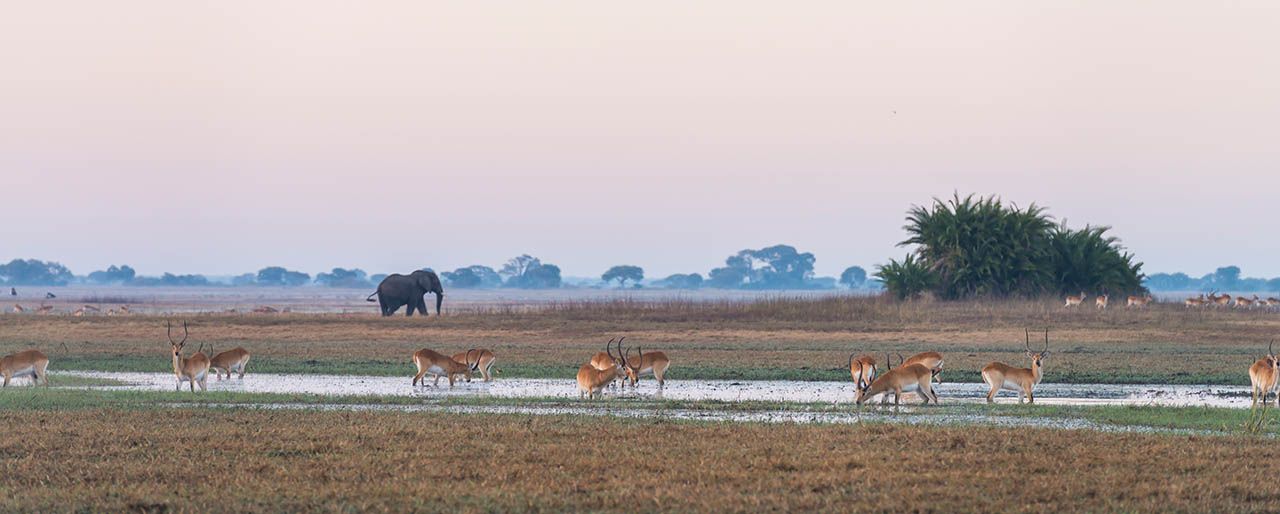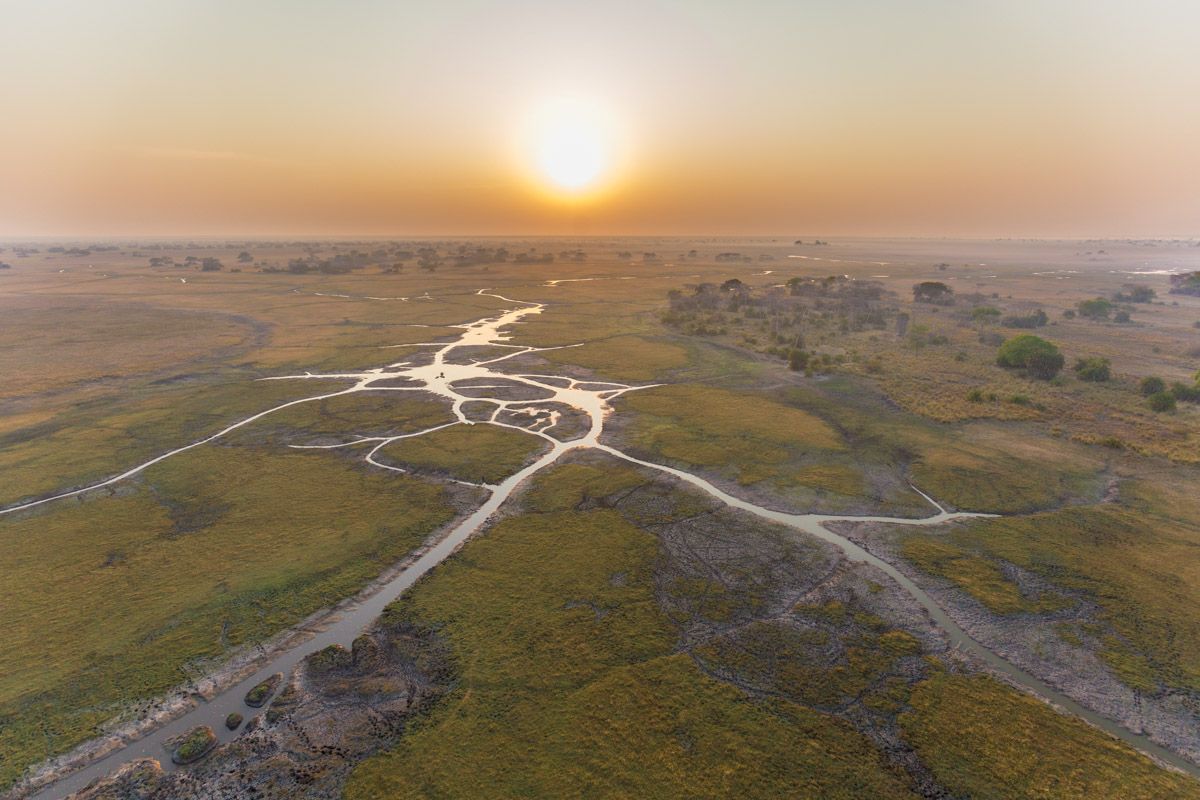The Kafue National Park is Zambia’s oldest and largest national park. It is also one of the continent’s wildest parks and due to its limited tourism activity, the bush is still pure and unexplored…
Writer: Sarah Kingdom

Photography: Mukambi Safaris
The Busanga swamps, with their adjacent flood plains, in the far northwest of the park, is a highlight of Kafue. Much of this northern sector is permanently waterlogged, but in the dry season (May to November) the water recedes, leaving vast expanses of lush grazing, irresistible to the array of wildlife found here.
With the coming of the rains and the flooding of the plains, the camps on the Busanga Plains close. Due to chronic underfunding and poor accessibility, there is no anti-poaching undertaken by the Department of National Parks and Wildlife (DNPW) during this time. With no fear of reprisals, this had led to widespread poaching.
Research by DNPW into illegal hunting and the bushmeat trade estimates that between 4,000 and 6,000 poachers live in Game Management Areas adjacent to the park. 75% of these poachers use military firearms (accessed both legally and illegally), while 13% use snares. DNPW also found that there has been illegal hunting conducted by licensed hunters, who are ‘harvesting’ as much as double their allocated quota.
Over the last few years Mukambi Safaris, Wilderness Safaris and J&M Safaris have provided transport and other logistics for DPNW anti-poaching teams. They were not sure how effective the patrols were, but what they did know, was that although poaching had reduced, it was still ongoing.
Knowing they had to protect the area more effectively, operators came up with a new approach. An anti-poaching project was instigated, where the ground operators would fund and support a constant DPNW patrol team presence on the Busanga Plains. In addition, as the plains flood annually, air surveillance and the deployment of teams by helicopter would be introduced. The geography of the plains makes it ideal for air surveillance and offering no hiding places for poachers. A two-seater spotter plane (provided at cost price, by Ntengu Safaris based in the GMA) would do aerial surveillance of the area and if poachers were spotted, then a helicopter would be dispatched, along with the patrol team, to wherever illegal activities have been seen, within about 15min.
So far the results are promising. “We noticed hardly any poaching activities since the poachers know they cannot escape from a helicopter,” says Edjan van der Heide of Mukambi. A number of poachers have been arrested, poaching camps have been destroyed, weapons and other equipment have been confiscated. An aerial population survey was carried out after the scheme had been in operation for a while. The results showed a promising increase in a number of species; including red lechwe which has increased in numbers by 487%, puku by 103%, Lichtenstein’s hartebeest by 78%, and blue wildebeest by 113%.
The aerial patrol scheme is not really a viable, long term, solution though. Whilst operators are happy to contribute to the costs of this project, it ultimately needs to be the responsibility of the DPNW to monitor the park and control poaching… though, with limited funding, it is not certain they will ever be in a position to do so.

Photography: Mukambi Safaris
Getting there
If coming from Livingstone by road you will need a 4×4. After 120km of good tar road, you will turn at Kalomo. 74km on gravel road will get you to the Park’s south gate. 240km later you will reach the Hook Bridge crossing the Kafue River in the centre of the park. From the Hook Bridge heading to the Busanga Plains, you are looking at a 120km drive, but this will take you about 4 hours.
If travelling from Lusaka it is a comfortable 3hr drive on a tarred road to the Hook Bridge. Then follow as above.
Charter flights direct to the Busanga Plains are available from Lusaka
Where to stay
Kafue National Park lodges vary from remote tented camps to luxurious safari lodges. There are accommodation types to suit all budgets and tastes. These safari lodges or tented camps will provide the base for an incredible Kafue safari where the huge variety of birdlife (490 recorded) and large herds of red lechwe, puku antelope, wildebeest and antelope are constantly watched by big cats, spotted hyena and wild dogs. Browse through our selection of Kafue National Park Lodges to find your perfect stay.
Click here for accommodation options in Kafue.

Photography: Mukambi Safaris

Leave A Comment